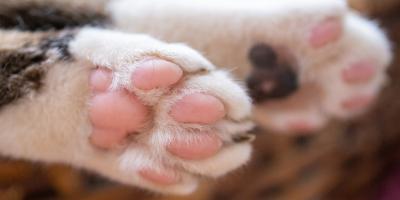Typically, female cats will start to go into their estrus cycle or heat cycle by six months of age. Certain environmental factors like temperature and access to potential mates can cause it to happen sooner or later.
Certain breeds – like Siamese cats – may go into heat as early as 4 months, while other breeds may not go into heat until around 10 months of age. Larger-sized cats may also take a bit longer to mature. Nonetheless, when a female cat grows to about 80 percent of her adult weight, puberty usually begins.
When is Mating Season for Cats?
A cat’s mating season relies on several different factors, including geographic location. For example, in the Northern Hemisphere, the mating season for cats runs from March to September, while in the Southern Hemisphere, it’s from around September to March.
Cats living indoors with regulated temperatures and lighting can potentially stay in heat year-round. That’s because – assuming a cat has not been spayed – the lighting and temperature of indoor environments mimics that of the natural triggers/settings for mating.
Another contributing factor can be the presence of other cats, especially intact ones. Once the conditions are right, the reproductive cycle begins.
Do Female Cats Get Periods?
Yes, cats have periods during their estrus cycle, but menstruation is different for cats than for humans. Unlike human females, cats do not shed the lining of their uterus and bleed it out.
Instead, the womb-lining gets reabsorbed by the cat’s body. As a result, cats are unlikely to have more than a little light bleeding occur during this time, if at all. If you notice more than some light bleeding, call your veterinarian.
How Long Does a Cat Stay in Heat?
A cat can stay in heat anywhere from about a week to 10 days, with 15 to 21-day intervals in between. If a female cat finds a mate, however, her estrus period will last no more than four days. It’s normal for a cat to go into heat around two to four times per mating season, with peak activity taking place in the Northern Hemisphere from about February to October.
How Do I Know My Cat is in Heat?
There are many indicators that will tell you when a cat is in heat, including crying, unusual posturing and an intense focus on male cats that may result in your cat trying to escape your house when she sees one.
Before your cat goes into estrus, there’s a lead-up called proestrus where your cat may show increased signs of affection. She may also rub her body – especially her hindquarters – against various objects and furniture as well as any other cats and even humans living in your home.
Your cat may also vocalize and let loose a loud yowl intended to get the attention of male cats. They may also spray while in heat to mark their territory. If you don’t want kittens, it’s important to keep a close eye on your cat to prevent them from trying to escape to the outside to try to find a potential mate.
Once in full heat, you may notice your cat walking with their tail pointed to one side and go into the mating stance, which includes lifting the hips skyward while putting their head down and kneeling with the front legs.
How to Support Your Cat While in Heat
Going into heat can be an uncomfortable time for your cat. Cats don’t have the same bloating, cramping or other physical symptoms that human females do during their cycle, but that’s not to say they don’t experience some form of discomfort as well as irritability. To alleviate some of this discomfort, try the following:
- Provide your cat with a covered heated pad to lay on
- Try giving some catnip to calm them down
- Play with your cat to help distract from discomfort
- Give stress-relieving herbs or pheromones to help ease stress levels
If you have specific questions or concerns about your cat, don’t hesitate to contact your veterinarian. Discover more insights about kittens and cats from our pet experts on our Pet Expertise page.
Related articles

Be Rewarded for Your Purina Purchases
Earn and redeem points for Purina products with myPurina app.








